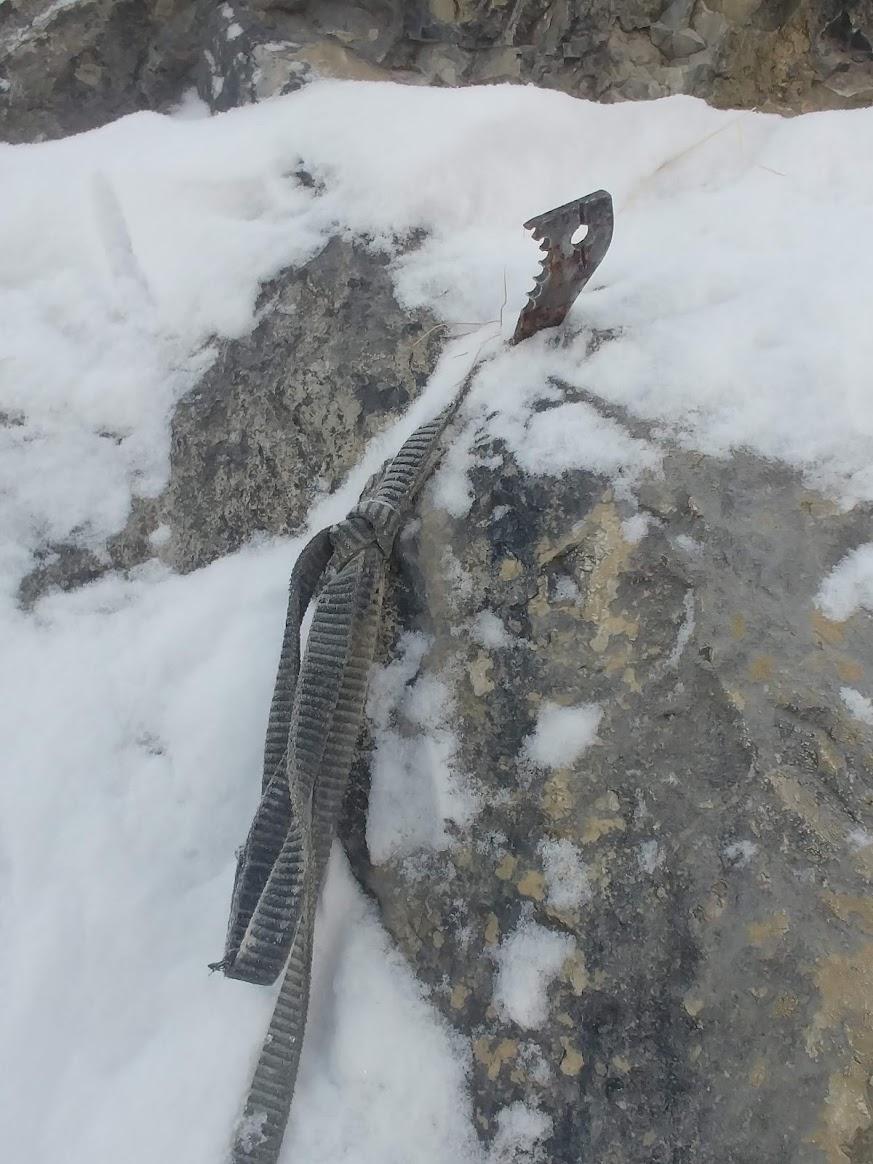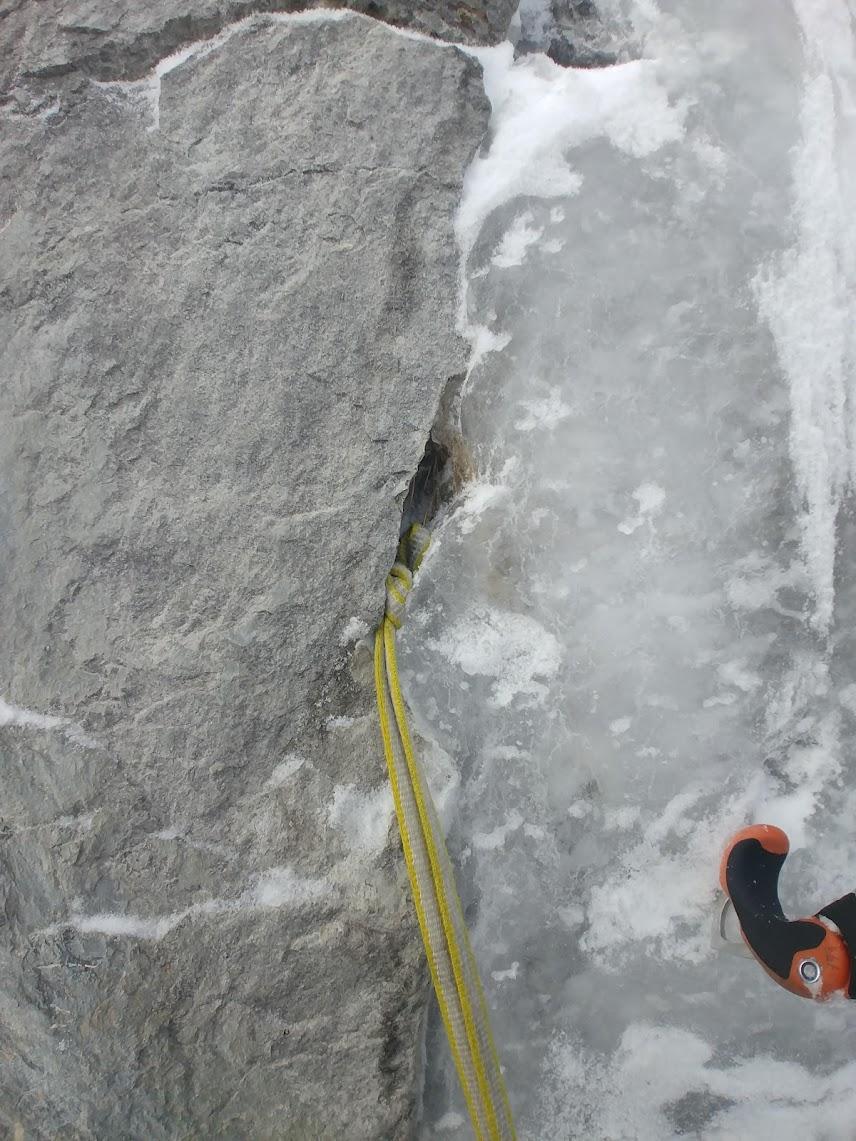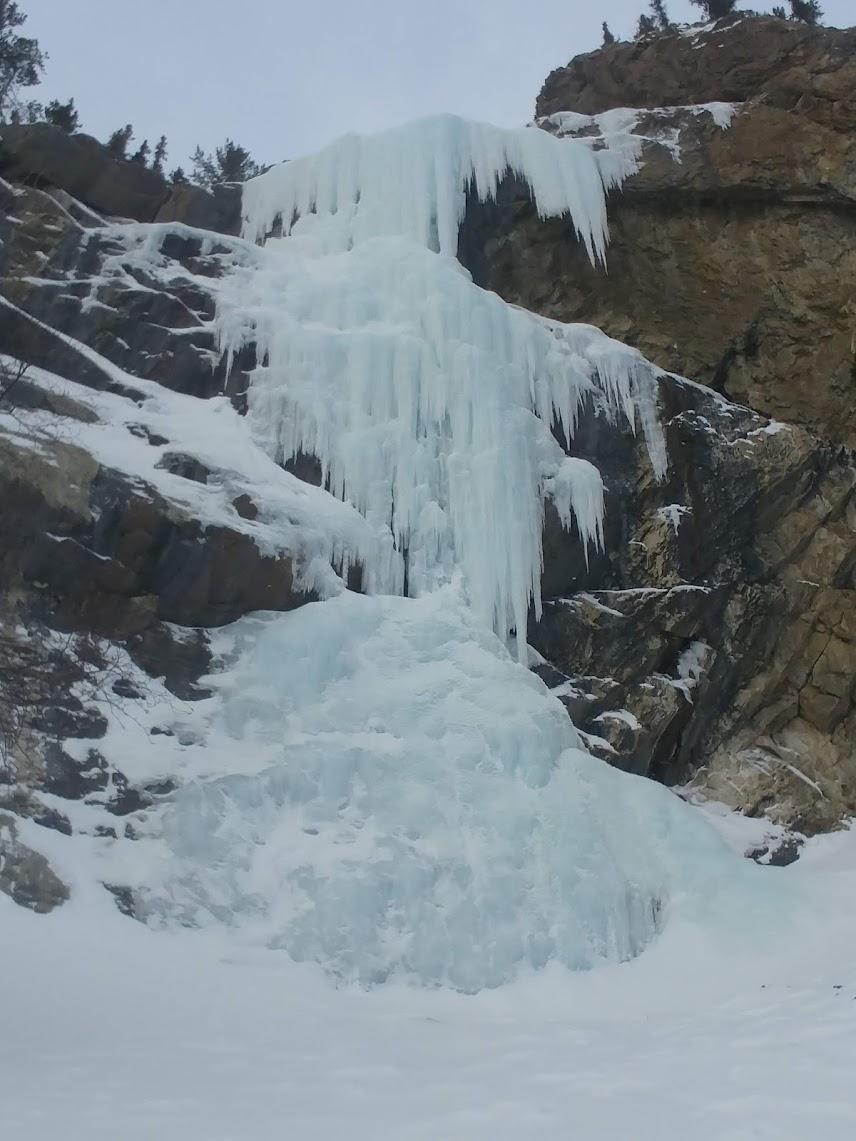We climbed Nothing but the Breast on Jan. 20. The first pitch was about 40 m to a flat stance at a bolted rock anchor with delicate moves over delaminating ice and past a tied off BD ice pick (someone got creative) where no other pro could be found. Luckily, we didn’t try to belay higher as there is no ice thick enough to take a screw for a long way.
The second pitch traverses left from the bolt anchor to scratch up thin snice past one bolt and then runout, insecure climbing to another bolt with a bail sling on it. Above this my partner got creative with a jam knot between rock and ice (pictured) and then had to scratch his way carefully above this for another 10 m before finding thick enough ice for some stubbies.
The obvious belay was a good tree in the flat snow above (70 m pitch with six pieces of pro). Supposedly there are six bolts to protect the thin ice, but much snow cleaning revealed only two. There are many obviously good places to position bolts to the climber’s right that would not get so easily buried under snow and make the climbing much safer and more enjoyable.
The final pitch was super fun and gymnastic. We used the climber’s left bolted anchor as the right requires a fair bit of movement over unprotected rock to access. The ice on this pitch is flowing but seems to stop near the top of pitch two. Ice on the first pitch and a half seems to be sublimating away.
We rapped the route:
1) Exactly 35 m from left anchor to snow bench
2) Descender’s left tree with cord and quicklink to pitch 1 anchor (~45 m)
3) 40 m off FIXE chain to base
There are also trees to rap on the climber’s right that could have gotten us down with a single 70 m rope. There was knee deep windslab on the snow bench below the last pitch so the walk off might also have suspect slabs.



